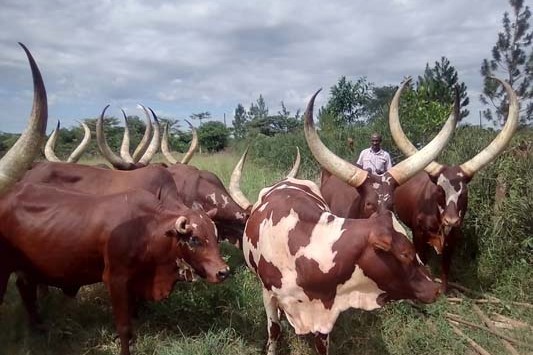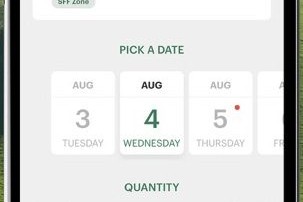By Anne Lee
Ryegrass is at the very heart of grazing management and pasture renewal decisions on Dalkeith and Kowhai farms near Methven.
It’s the kingpin, the hero of the pasture-based system and although other species have been introduced, their management must fit in with ryegrass rather than compromise its quality.
The two are owned by the Barlass family (David and Julie and Sarah and Andrew) and farmed by father and son team David and Andrew.
Dalkeith has been in the family since Andrew’s grandfather bought it in the 1940s.
It was one of Canterbury’s early conversions with David making the switch to dairy in 1997. Kowhai was bought and converted in 2012 but has a long history in dairy reputedly being New Zealand’s largest dairy farm in around 1910 mikling 500 cows. While the farming business is intergenerational so too is the management to a degree.
‘We don’t have irrigation here and being closer to the foothills
it’s a shorter growing season than further out on the plains.’
James and Anita Fleming are variable order sharemilkers on Dalkeith where James’ father Graham was long-time 50/50 sharemilker and a partner in the Kowhai farm. Alan and Lee Harkness are variable order sharemilkers on Kowhai. Prior to this Alan had been Graham’s 2IC.
Andrew and Sarah returned to Canterbury and the farms in 2017 having decided the country life was a great environment to bring up their young family.
They’d worked in Sydney and New Zealand – Andrew as a fund manager for Deutsche Bank and Sarah as a lawyer.
While Sarah is now working from home in Canterbury for a law firm in Sydney, Andrew has exchanged his business suits for work boots and overalls.
The farms are both fully self-contained with the stocking rate set at about 3.1 cows/ha on the dairy platform area of each.
The boundary with support land on each farm isn’t hard and fast with area used for wintering going back into grass as part of the pasture renewal programme.
Land comes in and out of the milking platform to the support block each year so while the number of hectares remains about the same, where exactly those hectares are can change. Andrew says having control over how young stock are reared, cows wintered and when supplement is made helps manage risk and costs to the business.
“We don’t have irrigation here and being closer to the foothills it’s a shorter growing season than further out on the plains.
“We’re more exposed to seasonal climatic variation and although we get enough rainfall, without irrigation our pasture growth curve isn’t as consistent as it is on the plains.
“It’s Dad’s quote, but we always grow the same amount of grass in a year, we just never know when it will come.” Andrew says.
Typically, there will be a flush of growth in October with a dry, hot period in January but that can vary significantly in some seasons. So instead of having a higher stocking rate and filling the feed deficits with bought-in feed they hold the stocking rate slightly lower and make supplement when the surplus comes, shifting that into the deficits.
“We have our own equipment and can make individually wrapped bales so we
aren’t waiting on a contractor and we don’t have a minimum area.
“If there’s 4ha at the end of a paddock the team wants taken out so they can move on with the cows, we can do that.
“It’s about maximising the ME (metabolisable energy) of the pasture whether cows are eating it or we’re putting it into baleage.
“We use our equipment to do that. We’ve got the ability to be nimble.”
David is still actively involved on the farm with everyone having their niche.
“I’m very aware of letting Al and James get on with their business – the livestock side of the operation, milking the cows, managing them and managing their staff.
“In addition to the overall strategic direction and the big picture, I’m focused on making sure Al and James have everything they need, that the water’s there, fences are there and that they’ve got good pastures, good fertility.
“I also look after all the young stock, manage the supplementary feed, cultivation and getting winter feed and new pastures in the ground.”
At the time Andrew returned to the farm all paddock soil testing was being promoted and while the average Olsen P levels were adequate, greater testing identified the unders and overs. The aim is to get Olsen P’s up to 35.
He’s also had a big focus on pH with the aim to lift it to 6.2-6.4 to help clovers flourish.
He’s been working with Canaan Ahu from Agrownomics for soil fertility advice and says that as well as the usual suspects of nitrogen, phosphorous, sulphur and potassium they’ve also been applying micronutrients such as molybdenum, boron, cobalt and manganese.
“We’re using more mixes rather than just straight superphosphate, using things like serpentine super and ammonium sulphate.”
Andrew also started sowing more diverse pastures – initially using a perennial mix with more than 20 species.
“We quickly realised a number of those weren’t going to persist and we worked with Cates (Grain and Seed) in Ashburton to come up with a simpler mix of about 12 species and cultivars but again we found some just didn’t persist so we’ve narrowed it down even further.
“The issue was some species just won’t stand-up under our rotational grazing pressure.
“They haven’t had the breeding and selection to support rotational grazing and need much longer rounds and we’re just not prepared to do that because we’ll lose the quality in the ryegrass.
“It’s the mainstay of the system. It’s been studied for more than 40 years and in New Zealand we’ve developed an amazing system that works so well, it’s honed for ryegrass.
“People around the world want to emulate it but that’s hard to do because of our unique situation.
“We’ve developed a whole ecosystem around it – our animal genetics, pasture genetics, grazing rules and farm system.”
Andrew describes his farming philosophy using a Venn diagram analogy adopting the aspects of organic farming, regenerative farming and conventional farming that make sense in his environment.
Minimum tillage and reducing chemical inputs for instance.
“But we’re not going to stop putting fertiliser inputs in altogether. We’re taking meat and milk away so we’ve got to be depleting nutrients in the soil, but we can be mindful of the type of fertilisers we’re using.
“We’re using diverse species too – it sits well with me that our animals will benefit from diversity rather than just eating one thing day in day out but we’re not going to graze those species in such a way that it’s at the expense of ryegrass.
“What we want are the species that can add diversity for the cows but also work alongside ryegrass, that persist under the three-leaf grazing principle.
“The ryegrass plant is putting out it’s solar panels (leaves) and if we went in at 2.5 leaves, we’d be grazing at the steepest part of the growth curve, we’d be losing out on a portion of the high-quality drymatter that’s available up until that growth curve just starts to flatten out at the three-leaf stage.
“If you go in later than that three-leaf stage though, past those 3200kg DM/ha covers, or long grazing intervals, the older leaves start to die off and we get a drop in quality.”
Based on working with the ryegrass, Andrew now includes prairie grass, timothy, red clover, white clover, some Persian clover because of its first season yield, chicory and plantain.
“They’re stepping up especially when we get those hotter, drier periods.”
At the heart of the mix though is ryegrass – not one but five cultivars.
Three are cultivars of Germinal’s high-sugar Aber grasses – AberGain, a tetraploid which is scoring very highly on the Forage Value Index (FVI), AberGreen, a diploid and AberMagic, also a diploid.
David was among the early adopters of the Aber grasses, favouring the high-sugar benefits and the persistence in the dryland environment where hot, dry summers can be tough. Barenbrug’s Maxsyn and Governor are also part of the mix – both diploids and both scoring very highly all round in the FVI including for persistence.
The Barenbrug grasses have added to the shoulder season drymatter yields with the Aber grasses producing their greatest drymatter during the warmer main part of the growing season.
“During the real heat the clovers come into their own and we’re starting to see very good clover populations which can be attributed to a focus on soil fertility targeting legumes.”
All of the ryegrasses used are fine-leaved and densely tillered which suits the environment, Andrew says.
Including the tetraploid in the mixes for the dairy platform is an idea he took from the Lincoln University Dairy Farm (LUDF) and it’s proven very successful in terms of cows eagerly grazing down to residuals.
In paddocks that are solely in the support area he’s stuck with diploids.
“We find the youngstock are more restless and give it a harder time by running around whereas the cows come into the paddock and just get on with grazing.”
While the system and pastures are performing well there are always improvements that can be made, Andrew says.
“I’m sure we’ll tweak the mix as we go. There’s always something to learn.”
In his previous career there was plenty of analysis and learning and he’s brought that back to the farm.
“I don’t really have any preconceived notions and I havent been taught a particular way of doing things but I respect the years of science and experience that underpin our farming systems.
“I guess I’ll question practices though – so I can get a better understanding and I’m not locked into a specific way of doing things.
“It’s good to be curious, to be open and be prepared to try something different as long as you’re analysing what effect that’s having.”
Take a look at the video: https://www.youtube.com/ watch?v=fLfhOACjd-U






